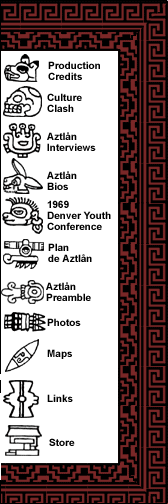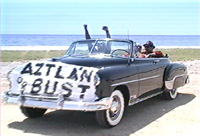

![]()
There are several codices (pictograph writings) which allude to the point of origin of the Azteca people (also known as Mexicas). One version, known as the Codex Boturini, shows the original settlers of Mexico City to have come from Aztlán, a place of "reeds and herons," a land of "whiteness," situated to the north and west of what is today Mexico City. The codex explains that the Azteca people lived as fishermen on an island of seven caves (Chicomoztoc) located in the middle of a marshy lake. When a natural catastrophe occurred (an earthquake or severe drought), they traveled South looking for a sign which would signal they had found a new home. According to this codex, the Aztecs left Aztlan in the year 1116 A.D. They eventually found the sign, an eagle eating a serpent on a rocky mound, in the middle of Lake Texcoco and there they built their capital city, Tenochtitlán. By the year 1325 they had established themselves as the dominant indigenous nation in the Valley of Mexico.
WHERE IS AZTLÁN?
There is great dispute about the exact location of Aztlán. Some scholars have placed it in Northern Mexico, near the town of San Felipe Aztlán, in the Mexican state of Nayarit. Others have located it as far East as Texas, as far West as California’s Salton Sea and as far north as the Great Salt Lake in Utah. Some scholars speak of several migrations and several possible Aztláns -- pointing even to the Midwest as one a possible point of origin. While scholars disagree as to its location, there are several factors which provide clues to the possible original site of the historical Aztlán.
Foremost is the cryptic mention of a place identified as the "ancient homeland of the Aztecs" appearing in a map used to adjudicate the conclusion to the Mexican American War of 1846-48 published by the New York map maker J. Disturnell in 1847. This map is officially attached to the well-known 1848 Treaty of Guadalupe-Hidalgo. Another allusion is found in a map of New Spain dating 1768. Here, next to a lake named "Teguyu" (Teguayo in most other written documents), in what appears to be present day Utah, the map maker has written, "from the environs of this lake, it is said that the Mexican Indians went forth to found their empire." The lake appears to be the Great Salt Lake.
| <<BACK |
 |
 |
 |